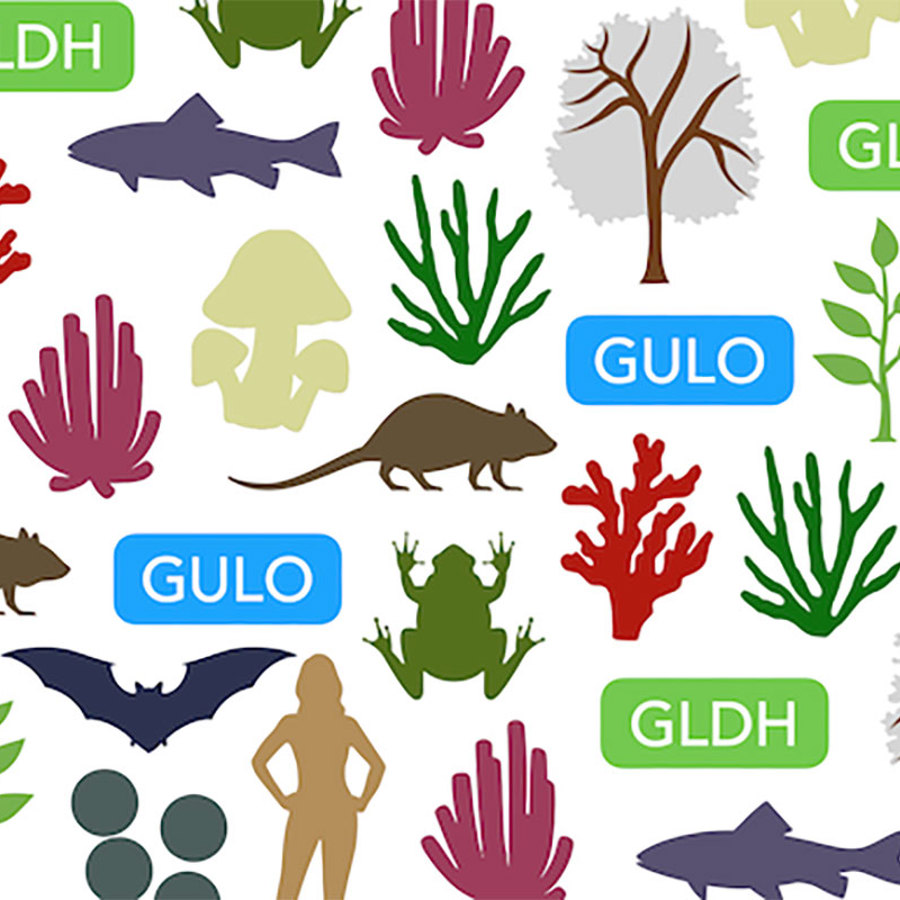
Some animals can make their own Vitamin C. How was this gene created in the first place?
March 16, 2022

- Related Topics:
- Animal biology,
- Comparing species,
- Evolution
A graduate student asks:
“Early primates happened to have a gene that made it possible to create their own vitamin C. Due to evolution later primates, including humans, have lost this gene. I have seen so many articles address and study how this gene was lost, but not how this was created? How was this gene even made in the first place? I imagine it must be through a very lengthy and complicated process through adaptation, genetic drift, speciation and/or evolution through mutation (I’m not very familiar with biology terms, so some of them might be wrong). Even if there’s no answer it’s fine, but the lack of geneticists even asking this question from what I’ve seen is mind boggling.”
Vitamin C. We need it to form muscles and blood vessels, heal our bodies, and absorb iron. But our bodies can’t make it naturally, so we have to get it from the food we eat. And if we don’t, well, we can get a disease called scurvy, which causes bleeding, bruising, and fatigue.1
Making this essential nutrient within our own bodies definitely seems beneficial, so why hasn’t evolution done its magic? Turns out, it already has!
Nearly all animals have a gene that allows them to make their own Vitamin C: the GULO gene. And as our question-asker mentioned, some animals have lost this gene over the course of evolution. This includes humans and other apes, insects, bats, guinea pigs, and some birds and fish.2
But if GULO exists in so many organisms, where did it come from in the first place?
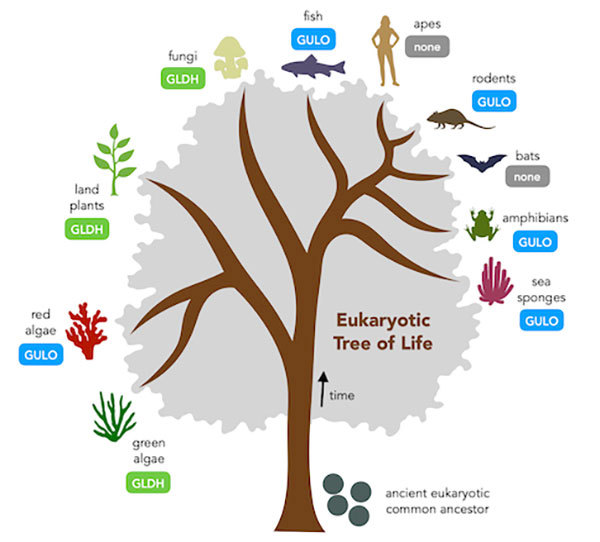
GULO is old. Like really old.
Two recent genetic studies discovered that GULO is present in organisms ranging from monkeys, to dogs, to sponges (no, not the kitchen kind), to fungi, and even some algae and simple marine life.2,3 All of these organisms are types of eukaryotes (as opposed to bacteria or archaea).
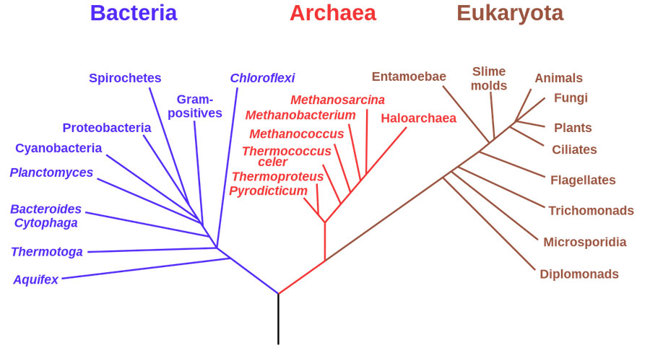
The researchers concluded that GULO must have existed in the last common ancestor of all eukaryotes2,3, which lived about 1.8 billion years ago!4
Theoretically, comparing lots of different species — including very ancient types of bacteria, archaea, and eukaryotes — would give us more information about when exactly this gene came about. But we don’t have high-quality (if any) genomes for a lot of these species, and things tend to change a LOT over 1.8 billion years. Which makes it hard to pin down a specific date.
So GULO is super duper old, meaning that it was probably very advantageous to ancient life forms. What could have caused it to evolve in the first place?
Vitamin C: The original juice cleanse.
About 2.4 billion years ago (in something called the Great Oxidation Event) bacteria started filling Earth’s atmosphere with sweet, sweet oxygen.4 Species prior to that had no reason to use oxygen, but ancient eukaryotes started using it once it became more prevalent.
This allowed them to get more energy from the molecules they munched on. But it also produced byproducts called reactive oxygen species, or free radicals.3 These are small, charged molecules that damage DNA and enzymes, increasing stress on your cells.5
So as eukaryotes evolved to use oxygen, they also evolved systems of antioxidants to prevent damage from these reactive oxygen species.3 If you have a sister who’s really into green smoothies, a teacher who SWEARS by Airborne, or an aunt who touts the health benefits of wine and dark chocolate, you’ve probably heard about antioxidants.
And Vitamin C just happens to be a really good antioxidant.
(Side note: Antioxidants aren’t a cure-all — they’re essential molecules involved in complex pathways that help your cells function properly. Be skeptical of any product claiming that antioxidants have superpowers!)
So, GULO evolved to help make Vitamin C, which helped super ancient organisms use oxygen without hurting themselves. Nice!
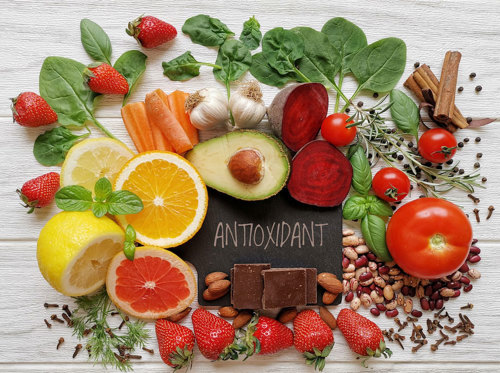
Gene-sis: A creation story
Now we know why GULO probably evolved, but that doesn’t tell us how. Genes can be created in several ways — let’s take a look.
Gene Duplication
This is the most common way of making new genes. For example, the DNA could slip during replication or break and be repaired wrong, creating an accidental copy of an existing gene. Over time, random mutations drive the two copies to have different functions. Over the course of a million years, about 100 gene duplications occur in the human genome!

Gene Fusion or Fission
Genes can also break apart or fuse together, creating new genes. For example, the SETMAR fusion gene in primates helps repair DNA breaks.6 And in humans, the BCR-ABL fusion gene is responsible for some forms of leukemia (of course, this fusion gene has not evolved to be prevalent in the human population because it is so detrimental).
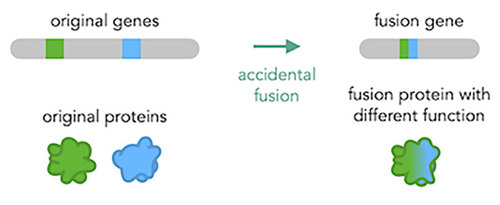
Horizontal Gene Transfer
DNA is inherited from parent to offspring (“vertically”).
But there’s always an exception in biology!
In bacteria, DNA can be transferred between species without reproduction (“horizontally”). New genes then become part of that bacteria’s genome. In fact, this is the primary way antibiotic resistance spreads.7

De Novo
In contrast to the other three, de novo (meaning “from the new”) genes do not come from an existing template. Instead, they come from non-coding parts of the DNA (DNA that we tend to dismiss as “junk,” but less so in recent years!). Mutations accumulate, allowing this bit to be transcribed, or copied into RNA. The cell then naturally translates the RNA into a protein. The poor baby protein probably doesn’t do anything, but over time, evolution could shape it into a protein with a never-before-seen function. Wow!
Scientists used to think this couldn’t happen, but we now know of numerous examples. To find a de novo gene, we simply have to compare the genomes of a species and its close evolutionary relatives, looking for genes that only exist in some of the species.
But as species evolve to be further and further apart, it’s harder to tell whether genes arose de novo or through one of the other methods. So what’s the story with GULO? Is it too old to even tell?

Worth its weight in G(o)LDH
So new genes can be created, and it happens a lot. But what about in the context of Vitamin C?
The same geneticists studying the origin of GULO were also curious about another gene, GLDH. It produces slightly different products than GULO, but it has the same function.3 If we can figure out how GLDH was created, perhaps we can learn something about GULO!
The researchers found that land plants and most algaes — in fact, almost all organisms that photosynthesize — used GLDH to make their Vitamin C instead of GULO. None of the organisms they studied had both.3
They have two different theories for how this could have happened:
Hypothesis A: Ancient GLDH
Perhaps an ancient antioxidant gene was duplicated in an early eukaryote. One of the copies evolved to become GULO and the other evolved to become GLDH. Species that evolved from the original eukaryote only needed one Vitamin C gene, so every species ended up losing one of the two.3
Hypothesis B: Gene Transfer
Or maybe GULO was present in early eukaryotes. GLDH evolved de novo in one species and then was passed to other species via horizontal gene transfer. Species that received GLDH no longer needed GULO, so it was lost over time.3
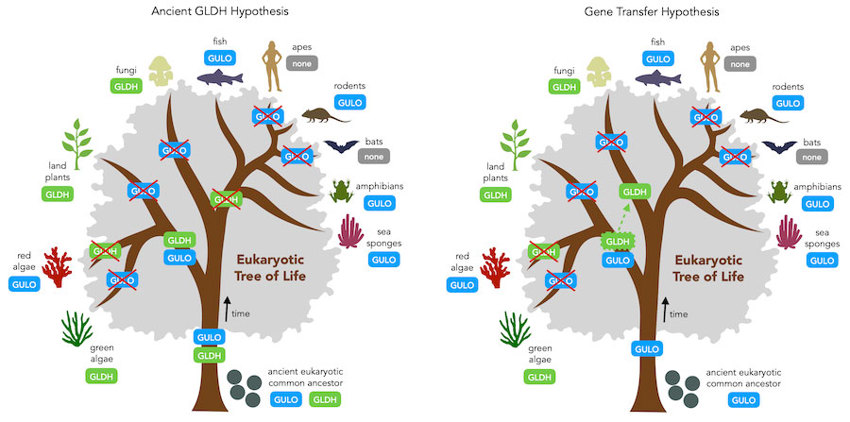
Both of these theories explain the distribution of GULO and GLDH among currently-living species. The second theory is somewhat more attractive because it’s simpler — fewer independent events (losses of a gene) need to occur to make it make sense. But even so, the evolutionary history is just way too ancient to tell which of the two theories is true.
The story of GLDH demonstrates how gene duplication and horizontal gene transfer could be used to create a new gene. While GULO’s origins may be too ancient to ever understand, GLDH provides some reasonable context.
We should thank those early eukaryotes for creating GULO, even though it didn’t work out for humanity. It’s not Eu(karyotes), it’s me.

Author: Alyssa Lyn Fortier
When this answer was published in 2022, Alyssa Lyn was a Ph.D. candidate in the Department of Biology, studying the evolution of immunity-related genes in Jonathan Pritchard’s laboratory. She wrote this answer while participating in the Stanford at The Tech program.
 Skip Navigation
Skip Navigation
